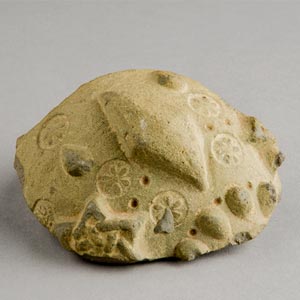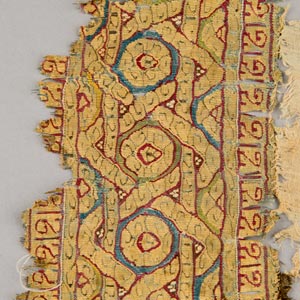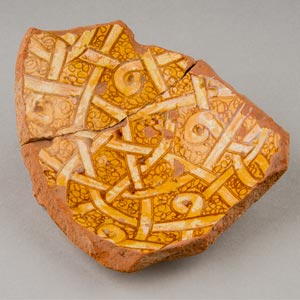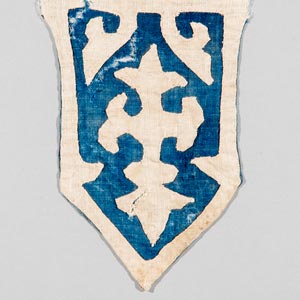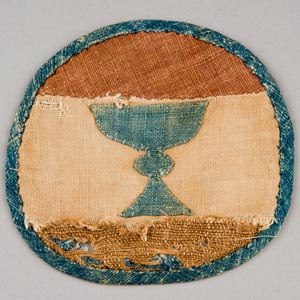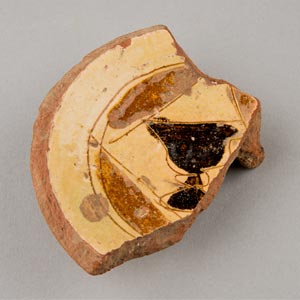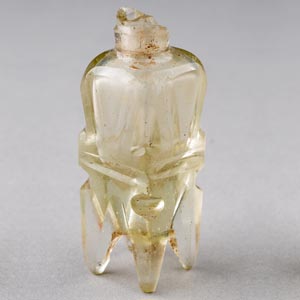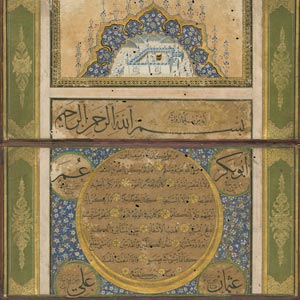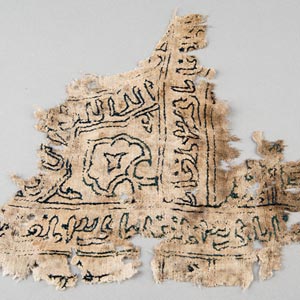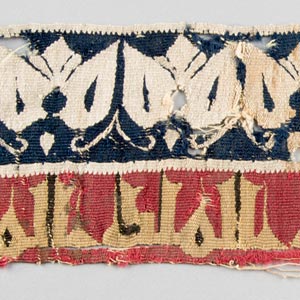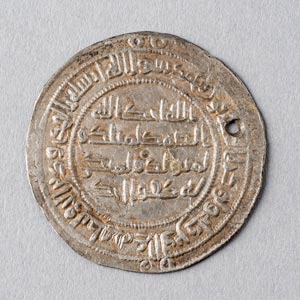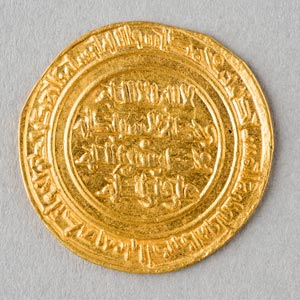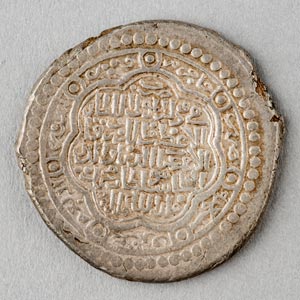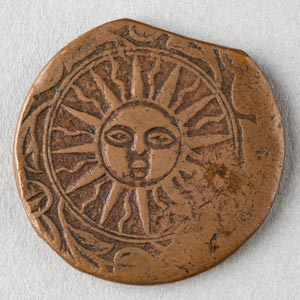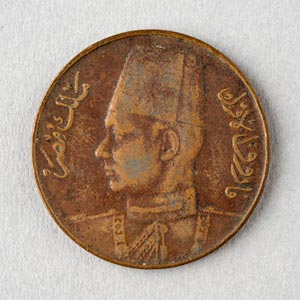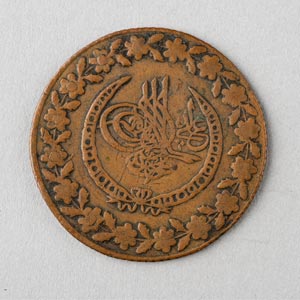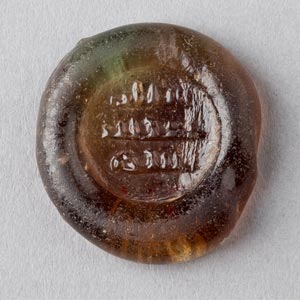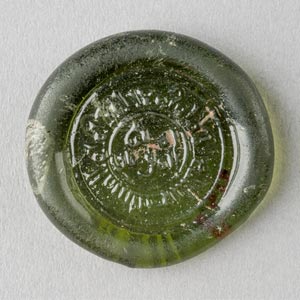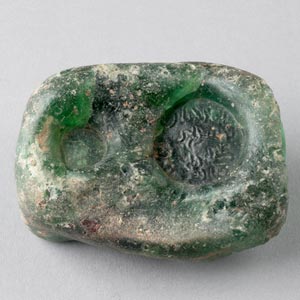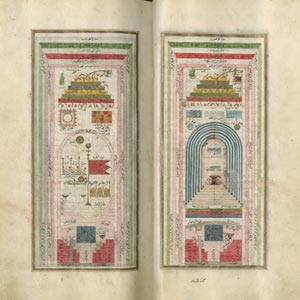Media Metaphors
The Show

Media Metaphors
In his treatise on penmanship, al-Tawhidi draws a parallel between calligraphy and jewelry by using one art form as a metaphor for another. This phenomenon, in which one medium mimics or refers to the qualities of another, is relatively common in Islamic art. Such is the case with ceramic bowls painted with luster that shimmers like gold and ceramic vessels encrusted with jewel-shaped bezels. Moreover, some floral mosaics recall the lush gardens of paradise, while a calligraphic diagram could metaphorically represent the character and being of the Prophet Muhammad.
Tiraz and Epigraphy
Although derived from the Persian word for embroidery, the word tiraz indicates an inscription band found on textiles, woodwork, architecture, and other media. Certain words and phrases are believed to protect and transmit blessings (baraka) to an individual, especially if inscribed on a burial shroud wrapped around the deceased's body. Still others offer well wishes to their owners and viewers.
Coins and Measures
Many Islamic coins are purely epigraphic, providing statements of the faith, the ruler's names and titles, and the place and date of minting. However, a number of exemplars also display logos, animals, human figures, signs of the zodiac, cosmic symbols, and bust portraits. Because coins were not always minted according to standard weight and purity levels, glass weights were used to measure the amount of metal currency required for a purchase. Engaging a media metaphor, glass weights tend to mimic the shape and appearance of their metal counterparts.

